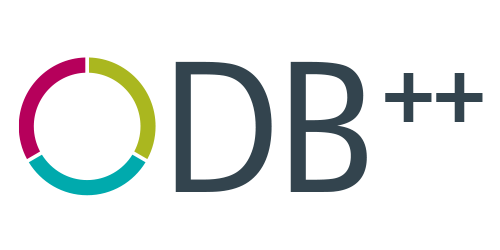The release of ODB++Design (ODB++D) version 8.1 update 3 represents the eleventh release since the initial release of v8.0. Unlike many other formats used to transfer the PCB digital twin from design into manufacturing, a pillar of the ODB++D format is to ensure compatibility over a long period of time. The same could be said about Gerber 274D/X which is why the format is still one in primary use today.
What this means is that an ODB++D version 8 product model presented to an application that is ODB++D version 8 compatible will be able to read in all releases of ODB++ version 8. That includes all major, minor and update releases.
Consider the following: Valor NPI version 9.0 was released in 2010 and yet can use an ODB++D version 8.2 product model generated from the most recent release of Valor NPI version 11. That will remain true until changes to ODB++D to support more complex content result in an ODB++D version 9.0 release. Version 9.0 would trigger development partners with the need to support a more significant format change. ODB++D has truly embraced the idea of an extensible format, yet with the needs of development partners in mind.
New content added to ODB++D since the initial version release of the major is always summarized at the beginning of the format specification. This enables those adopting the changes a quick overview to see if any changes can enhance the productivity or the user experience.
A great example of an enhancement in 8.1 Update 3 is the file referred to as the “shortf” file. This file contains intentional shorts as defined by the layout engineer. A solution that uses this information will improve up productivity by informing the user of the intention rather than reading this in the design notes. Also, the user experience improves by not reporting the intentional shorts are erroneous detected shorts that still then need to be manually validated. Now the manufacturing netlist simply confirms the presence of the intend short while informing manufacturing they are as intended.
Another enhancement was the introduction of the “stackup” file which can exist alongside the matrix file. The stackup file contains all the information found in the matrix and more. The stackup file contains multiple sections starting from EDA followed by possible Manufacturers’ stackup definitions. The EDA section contains a single stackup identifying the targeted stackup design. Following that are collections of manufacturers’ stackup options for possible use by the OEM.
The stackup file can contain any number of manufacturers followed by any number of alternative stackups. In 8.1 update 2 content related to the stackup, but refers to routing conveying specific “impedance” requirements within the product model. The additional content allows for the identification of copper features throughout the design which are impedance driven. Again typically this information is found on the drawings that needs to be manually located and assigned within the product model. With ODB++D version 8 this information is seamless transferred for use by manufacturing solutions.
Other enhancements have been delivered for use during the transfer into manufacturing. IPC-4761 via types, via in pad, bonding pads and test attributes were added to the format definition as well.
All enhancements to ODB++D version 8.1.3 were carefully defined to increase productivity by streamlining the manufacturer’s user experience in preparing the product model for production.

